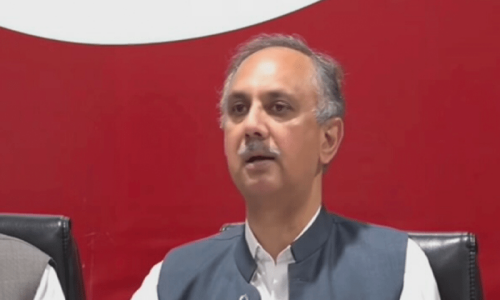PESHAWAR: What is Pakistan’s first National Internal Security Policy? A hundred-page document that includes annexure, reproductions, repetitions, statistics and graphics as well as long discourse on what led Pakistan into the morass of terrorism and extremism and what needs to be done to correct the course.
In essence, however, the voluminous NISP document boils down to 16 pages and it is all about reviving a fledgling National Counter Terrorism Authority (Nacta) and how to strengthen and augment it with a rapid response force and an air wing to include helicopters and fixed wing aircraft.
This is the only part that has details, clearly outlining activity, responsibility, timeline and approximate cost, neatly labelled as National Internal Security Implementation Plan. This is, in the words of Interior Minister Chaudry Nisar, Pakistan’s first response to terror for which he and his men had to burn the proverbial midnight oil.
And this is Nisar’s panacea for the plague besetting Pakistan – Nacta, the be all and end all, to borrow Nisar’s words in the National Assembly on Wednesday. Nisar’s one-window solution to the myriad problems of terrorism and extremism. The National Internal Security Policy is in fact National Internal Security Plan implemented through Nacta. Missing from the plan is the “how part”.
But before one goes to highlight what the NISP (read Nacta) all about, just one correction. There are six intelligence agencies and not twenty-six -- an oversight perhaps – the interior minister missed reading it correctly.
An annexure –U-- describing the country’s National Internal Security Apparatus (Nisa) – all the intelligence agencies -- and the various government departments have been highlighted with asterisks. The intelligence agencies: the Inter Services Intelligence, Military Intelligence, Intelligence Bureau, Naval Intelligence, Air Intelligence and Special Branch -- have been lumped together with Railway Police, Customs, Airport Security Force, Maritime Security, KP Police, Punjab Police, Sindh Police, Balochistan Police, AJK Police, Pakistan Coast Guard, Frontier Constabulary, FIA, Capital Territory Police, Frontier Corps and Rangers, Anti Narcotics Force and Balochistan Levies.
So Pakistan does not have 26 intelligence agencies but, what the NISP document does reveal is that it has a long list of proscribed organisations, 60 in all, both Pakistani and foreign, besides three others listed in the United Nations Security Council Resolution 1267.
With the lead role assigned to Nacta, the NISP’s broad contours include establishment of the writ of state and protection of the people, protecting the life, property and fundamental rights of the citizens of Pakistan, promoting pluralism, freedom, democracy and a culture of tolerance, reconstruction of social physical infrastructure in affected areas and follow-up for timely implementation of sustainable and integrated development and rehabilitation of affected areas.
Its mandate also includes developing a national narrative, development of a national de-radicalisation programme, reconciliation, Youth Engagement Strategy, integration of mosque and madressahs in national education system, introducing legal reforms, rehabilitation of all victims of terrorism, prevention of misuse of IT and cyber crime, regulating the movement of Afghan refugees, introduction of a robust border control regime, creation of a rapid response force and to cap it all, the establishment of a Directorate of Internal Security to be headed by a director general.
But while in its analysis of the situation, the NISP identified “four general causes for all internal security threats” namely: “flawed and myopic foreign policy choices relating to Afghanistan, Kashmir and India, prolonged military rules, declining capacity of the state institutions and poor governance”, it offers no answer as to what approach, strategy and policy would the federal government undertake to correct them.
Also, while the document emphasises again and again the need for developing a “national narrative” and a state response to the ideological discourse of the extremists, it offers no solution as to how does it intend to achieve this.
As one analyst put it, the document has interior ministry and Nacta written all over it. What it does not have is a collective state response with roles assigned to all the state institutions and departments, from introducing reforms in the education system, to using the ministry of religious and minority affairs to the ministry of information. “It is an ailment that would require multiple doses of antibiotics,” the analyst remarked.














































